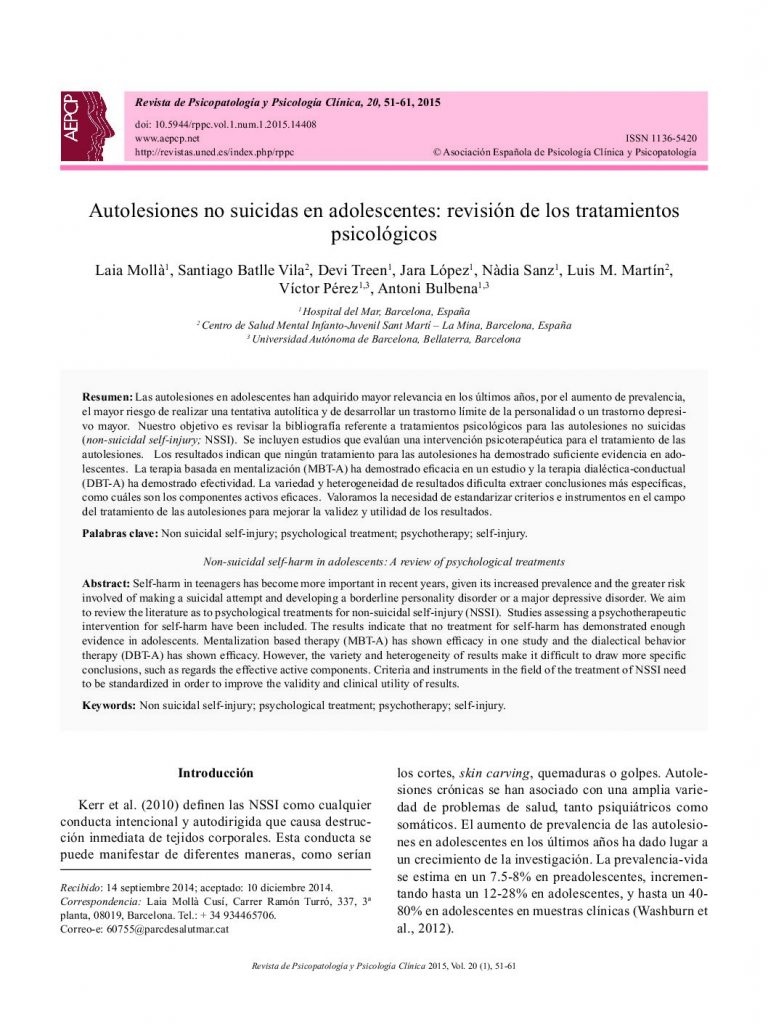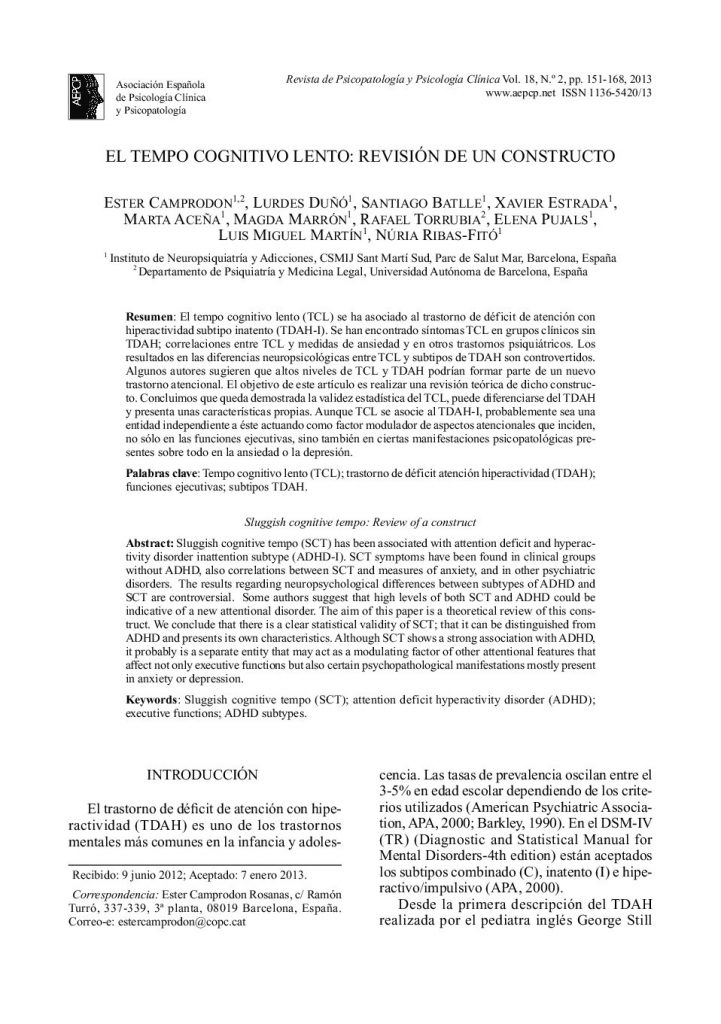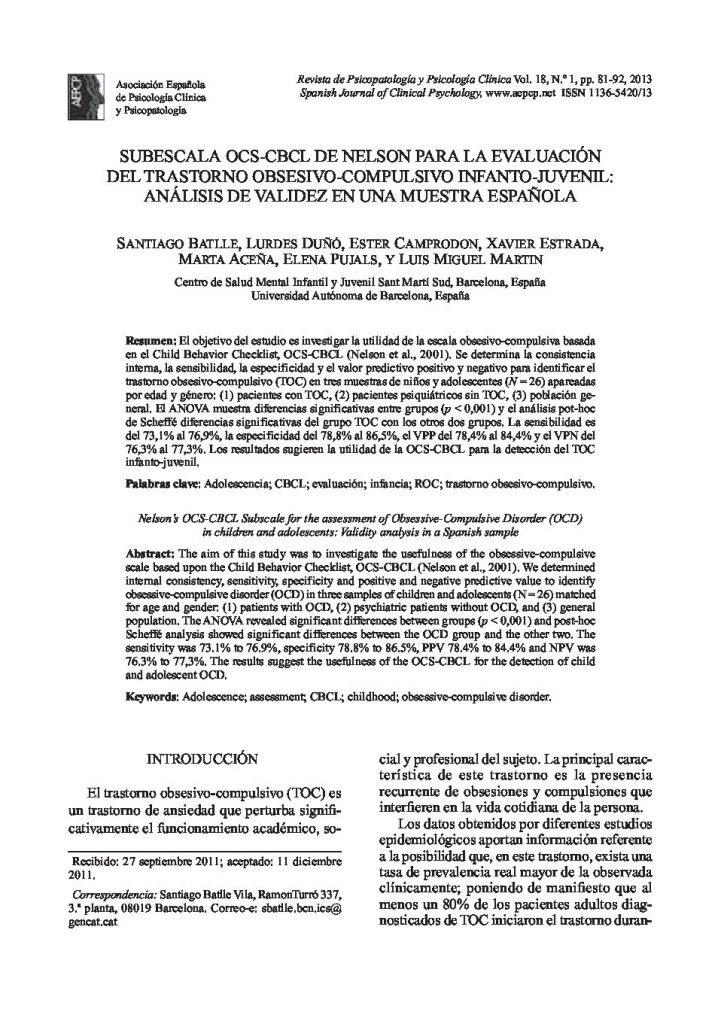Autolesiones no suicidas en adolescentes: revisión de los tratamientos psicológicos.

- Maximizar la terapia de exposición: Un enfoque basado en el aprendizaje inhibitorio.
- The influence of demographic and clinical variables on perceived social support in cancer patients.
- Contenidos obsesivos, miedo a la enfermedad y asco.
- Deliberate self-harm in adolescence: The Impact of childhood experiences, negative affect and fears of compassion.
- Autolesiones no suicidas en adolescentes: revisión de los tratamientos psicológicos.
- Evitación y psicopatología: Un estudio a través de una tarea experimental y su relación con medidas de autoinforme.
- El psicólogo y la procreación aplazada: Consideraciones acerca de la criopreservación y de una calidad óptima de gametos.
Self-harm in teenagers has become more important in recent years, given its increased prevalence and the greater risk involved of making a suicidal attempt and developing a borderline personality disorder or a major depressive disorder. We aim to review the literatureas to psychological treatments for non-suicidal self-injury (NSSI). Studies assessing a psychotherapeutic intervention for self-harm have been included. The results indicate that no treatment for self-harm has demonstrated enough evidence in adolescents. Mentalization based therapy (MBT-A) has shown efficacy in one study and the dialectical behavior therapy (DBT-A) has shown efficacy. However, the variety and heterogeneity of results make it difficult to draw more specific conclusions, such as regards the effective active components. Criteria and instruments in the field of the treatment of NSSI need to be standardized in order to improve the validity and clinical utility of results.
Las autolesiones en adolescentes han adquirido mayor relevancia en los últimos años, por el aumento de prevalencia, el mayor riesgo de realizar una tentativa autolítica y de desarrollar un trastorno límite de la personalidad o un trastorno depresivo mayor. Nuestro objetivo es revisar la bibliografía referente a tratamientos psicológicos para las autolesiones no suicidas (non-suicidal self-injury; NSSI). Se incluyen estudios que evalúan una intervención psicoterapéutica para el tratamiento de las autolesiones. Los resultados indican que ningún tratamiento para las autolesiones ha demostrado suficiente evidencia en adolescentes. La terapia basada en mentalización (MBT-A) ha demostrado eficacia en un estudio y la terapia dialéctica-conductual (DBT-A) ha demostrado efectividad. La variedad y heterogeneidad de resultados dificulta extraer conclusiones más específicas, como cuáles son los componentes activos eficaces. Valoramos la necesidad de estandarizar criterios e instrumentos en el campo del tratamiento de las autolesiones para mejorar la validez y utilidad de los resultados.





